What follows is an article from D B Dockter and Mark Herman on the design of their Ukraine 2022! game (an August 2022 playtest is seen above), expected to be available for preorder this summer.
Background:
Russia invaded Ukraine on February 24, 2022, attempting to conquer a near abroad European republic in an effort to recreate a Russian empire. This was the same European republic, Ukraine, that had successfully freed itself yet again by overthrowing a Russia-backed leader during the 2014 Maidan Revolution. For many of us children of the 20th century, it appeared like some fascist fever dream attempt to “Make the USSR Great Again”: a cold war finally going hot. A big European war in 2022? Seriously? Would Putin actually invade Ukraine again and attempt to erase a nation state of 41 million Europeans?
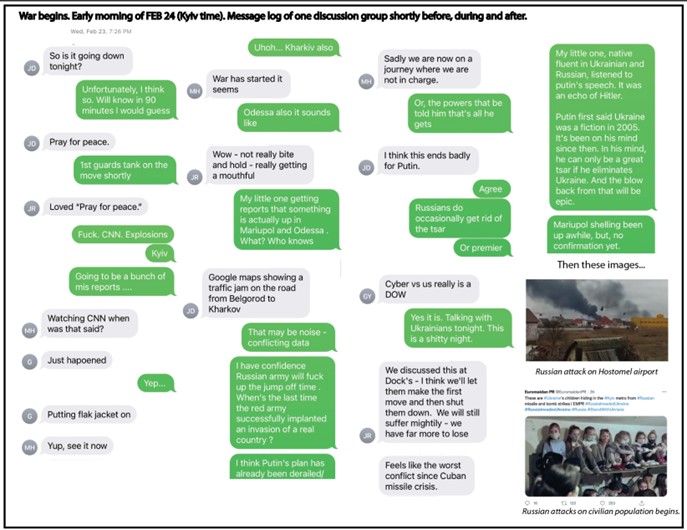

Many of us have followed (or participated in) the story arc since the fall of the Soviet Union, Ukraine’s evolution into a Western republic and the rise of Putin (see Putin’s Way: Frontline: PBS). And some of us have followed the 2021 Russian build-up of 100+ BTGs (Battalion Tactical Groups) plus other existing formations on the Ukrainian border. And, a few of us read Putin’s infamous July 2021 7,000 word essay “On the Historical Unity Between Russians and Ukrainians”. So, we had eyes on it.
The war has its roots in Russian Eurasianism, described by Marlene Laruelle, with one of its philosophical architects as Aleksandr Dugin. Russian Eurasianism is a call for an illiberal totalitarian Russian Empire to control the Eurasian continent—from Dublin to Vladivostok—to challenge America and Atlanticism. Russia’s war of “ethnic and cultural cleansing” of Ukraine represents just one continuing step in implementing that vision. More to follow in the Russian near abroad (see Baltic republics) if successful. Stay tuned.
Opposing that? An independent European republic, Ukraine, that precedes the founding of Russia by a few hundred years; a country that desires to become a part of Europe and not a satellite in some resurrected USSR led by a dictator. That’s the ideological context: a totalitarian expanding empire (think “House Harkonnen” for us Dune fans) vs. an independent European republic. It gets better.

So, the totalitarian regime tries to bum’s rush the republic, believing their own propaganda that the invader will be “Greeted as Liberators”. They pack a marching band for the scheduled glorious victory parade. The plan was to seize the republic’s capital, Kyiv, in 3 days, by utilizing a tried and true Red Army playbook (Prague 1968/Kabul 1979). Then, eliminate Ukraine’s leadership, suppress (“cleanse”) the resistance, topple the republic, and conduct a triumph worthy of Caesar to celebrate Russia’s great, new tsar. But the republic not only thwarts the plan, but, within six weeks, routs a vastly superior army (arguably top three in the world prior to war) out of the theater. How did this “Miracle on the Dnipro” occur?
A compelling story of resistance. And, as with any compelling story, fertile material to tell a tale. A book? A movie? An HBO series?
How about a military simulation (“wargame”) of the heroic struggle of Ukraine? The last one (designing a wargame of an ongoing conflict) is the fool’s errand two of us embarked on in the summer of 2022: a first draft of history while the bombs were falling…a view of the military conflict unfolding as it was.
We began designing a wargame on the conflict within the first 100 days of Russia’s invasion. So, there was plenty of fog of war surrounding what actually occurred, plenty of ground to produce a simulation that events would subsequently and possibly make irrelevant, and plenty of fertile material for the sound and fury of social media to rage against. Wiser men and women would avoid. But not us fools.
A Fool’s Errand?
Historical military simulations (“wargames”) seek to provide students of them with a sandbox to better understand what happened and why. Or, “What could have happened if different choices had been made?”: you be the judge. Designers of such simulations benefit from perspective (distance from the conflict) and being able to understand what actually happened using data/facts/stories, assuming that conflict is firmly buried in the past. Additionally, some of the immediate rawness of the conflict has passed/healed with time, so dispassionate perspective can be gained.
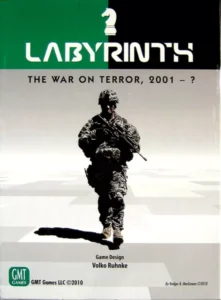
Modeling a hypothetical simulation gets a free emotional pass: the designer invents a story and the audience has little emotional attachment to the conflict. Modeling a conflict currently underway—headlines screaming with a daily litany of war crimes (such as Bucha)—blood on the streets…well, a designer tackling that subject gets no free pass. Tread carefully.
In 2010, GMT and designer Volko Ruhnke published Labyrinth: The War on Terror while the conflicts in both Iraq and Afghanistan were still occurring. Predictably, sound and fury ensued prior to publication, during publication, and post-publication. Many of the usual hobby horses were trotted out: “How can you do a game on a current war?”, “It’s not an accurate depiction of the nature of the conflict!”, “The game has a political viewpoint!” Yada,yada,yada.
Labyrinth won the Charles S. Roberts Best Post-WW2 Era Board Wargame in 2010. The game is the 53rd top-ranked wargame ever published [per BoardGameGeek], and just produced a recent expansion. So, Mr. Ruhnke proved, along with other designers, that one could cover an ongoing conflict well.
Challenges? Yeah…a few…
Some challenges with modeling an ongoing major European war in the first part of the 21st century:
1) PREMATURE LESSONS: Lessons drawn reflect what has been learned up to that point, which may prove to be actually the wrong inferences drawn from the conflict six months/six years/six decades from now.
2) FOG: Data/facts are incomplete; that fog of war thing thickens as proximity to conflict increases.
3) CHANGE: War has apparently changed, again!…There’s enhanced and expanded multi-domain war. For example, one in which images/pictures/field intelligence is uploaded to Twitter, crowdsourcing geeks pour over it/analyze it/amplify it, and it impacts the actual operational campaign and related information war – which in turn impacts the strategic will of the competing sides (for example, see #OSINTGuild224)…There’s a 24-7 integrated NATO/Ukraine intel net…And, the age of drones has arrived. Plus, there are changing economics. For example, consider one $78K Javelin missile (or a sub $1k drone!) destroying a $3M T-80 tank. That math won’t hunt.
4) PROXIMITY: The Russo-Ukrainian War is playing out every day and will likely continue until a dramatic, possibly horrific, conclusion occurs. This war ends in the bunker (mad tsar deposed) or battlefield (Russian army mutinies yet again). Negotiating with a fascist dictator on the march has historically proven to be a poor choice (see Munich 1938). So, it’s in our face reminding us of the horrors of WW2 and what could have happened not long ago (a cold war going hot…that The Day After thing).
5) MODEL: What is a decent strategic operational model of this particular conflict? Who has that? What existing models can be tweaked? Is there anything we can beg, borrow or steal?
One of has us has four decades of experience in this space (modeling modern conflict), while the other had extensive contacts/experience with both Ukraine and Russia to help us manage the design challenges.
Gulf War
In 1983, Victory Games published the military simulations Gulf Strike and NATO: The Next War in Europe, following upon the success of SPI’s 1978 big game, The Next War.
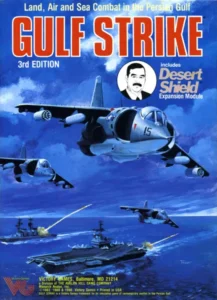
Gulf Strike was designed to be a triphibious simulation to examine hypothetical conflict in the Persian Gulf. Seven years after its publication, one of its secondary scenarios became a reality and the game for a short time was news. Herman’s favorite experience during the Desert Shield portion of the buildup was when he was on all the news networks, including a live interview on Fox. During one of the interviews the first question asked was “Why was I [Herman] trying to make money off the blood of dead Americans?” (and this from a Canadian news crew). Herman then mentioned that the game came out seven years earlier. The interviewer stopped the cameraman, looked at his notes and then said, “Damn! Now I have to turn you from a scumbag into a seer.” Without missing another beat the interview restarted and the first question was, “How did you have the foresight to do Gulf Strike?” Remember, if it bleeds, it leads.
In Herman’s subsequent book and numerous interviews, he indicated a classified version of Gulf Strike was used the day of the Iraqi invasion to map out potential US policy reactions. At D+1 the report was delivered to the Office of the Secretary of Defense. The story that is not well known is a week before Desert Storm (the offensive), the US Army used the game to look at their war plan and the result was an Iraqi collapse within 96 hours. So, the more interesting story is Gulf Strike was considered a valid combat simulation by the DoD.
One of the important features of Gulf Strike was its Theater and Operational level. When Herman subsequently did Flashpoint: Golan, he wanted to reflect the tremendous improvements in sensor to shooter architectures and how they would impact late twentieth century conflict. On February 24th Russia invaded Ukraine, and we began to consider updating the Flashpoint system to examine early twenty-first century warfare.
A mid-June 2022 email and call:
On June 13th, Herman received an email from a publisher wondering if he would be interested in doing a game on the war. The publisher was looking for something “simple/entry level”. That would not be us.
While we have collaborated on each other’s games, we’ve wanted to co-design a game for a bit. A quick phone call was placed by Herman to determine interest. Dockter had two issues with attempting the project:
1) “I’m too close to the conflict: second generation Ukrainian, friends/family in the fight, and I’m busy trying to assist the rebel alliance in a number of ways. So, pass.”
2) “And, I’m not happy with how modern conflict has been modeled at a strategic operational scale. The last decent design I’ve played is four decades old: The Third World War series by GDW. So, Mr. Herman, What model could we use for this war? Related, I have ZERO interest in developing something from scratch. So, hard pass”.
Herman’s response?
“Dr: This story needs telling- you can help tell it – and I’ve got a model that we can adapt. Promise. I’ve been designing modern strategic operational wargames for four decades. What I have in mind should work. And we’ve got a bench of highly interested play-testers, developers and helpers for this game”.
And with that, off we went…roughing out a game…
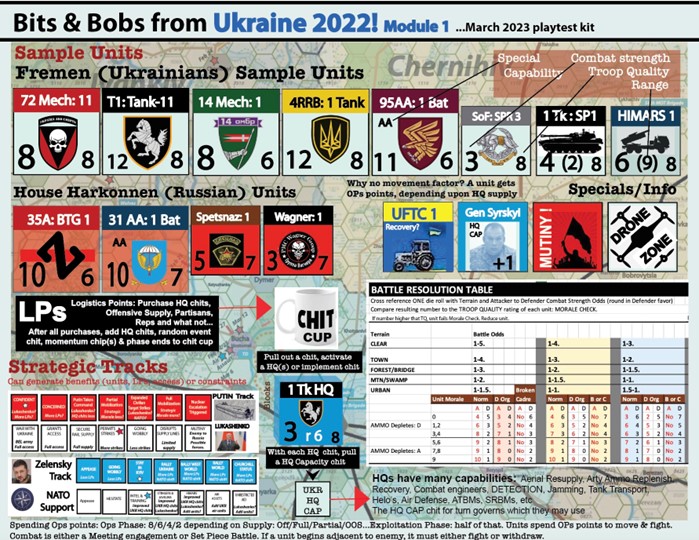
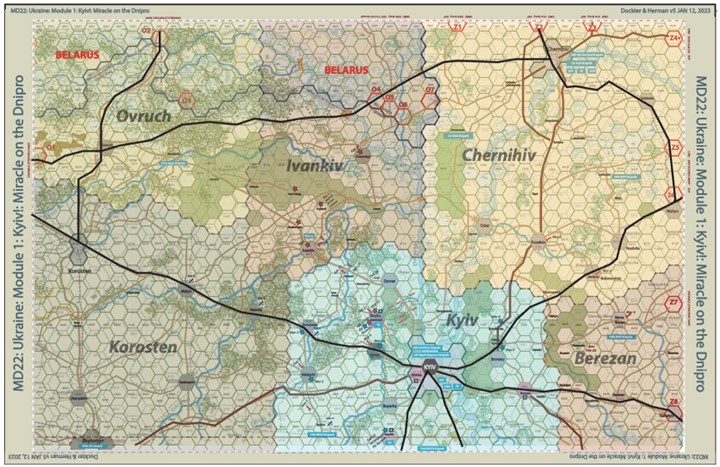
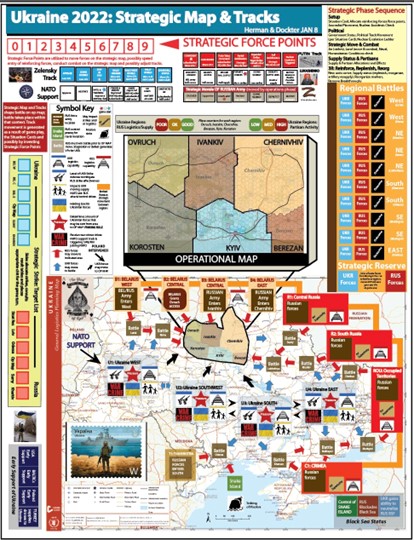
Back to the Future:
What are the major drivers/dynamics of the Russo-Ukraine war? First, what was Putin’s war plan? There’s a good depiction here by one of the whip-Valery smart Twitter war analysis geeks, @JominiW:
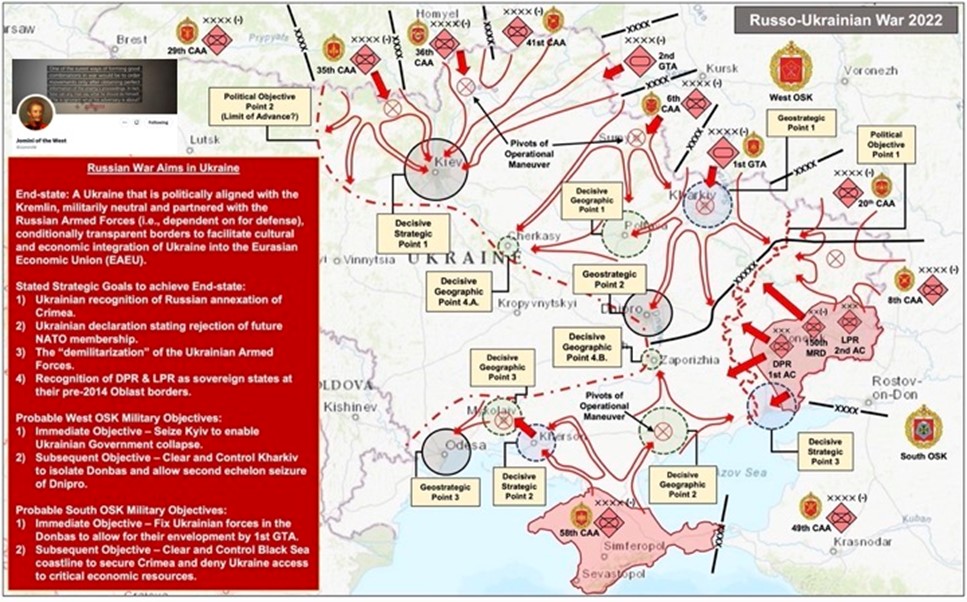
So how did it turn out; at least the initial phase? For that, we turned to Putin’s military strategist: General Valery Gerasimov (of “little green men”/hybrid war fame). His construct of modern conflict was published in 2013. On March 5, 2022, we sent a tweet regarding our assessment of Gerasimov’s implementation of his vision at that point: an epic failure.
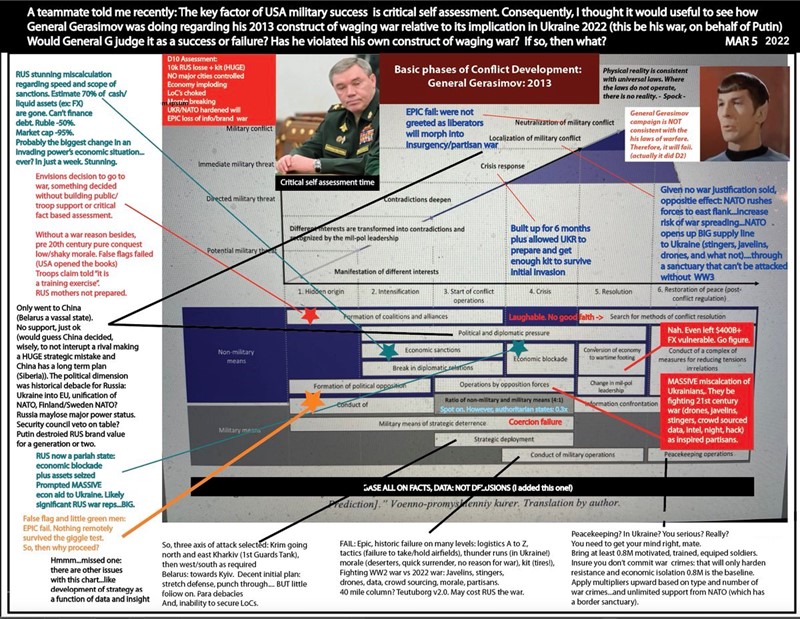
There is some rich irony here. Russian army doctrine reflects RED WW2 doctrine, which does not remotely match how war is being conducted in this or the previous decade – or even General Gerasimov’s view of hybrid war.
Dynamics of the Conflict
Given how the war has turned out so far, what can we infer about why it played out the way it did? A few dynamics that we will reflect in our strategic operational model include:
Impacting both conflict participants:
Politics. We both love historical conflict simulations that bound military operations within political constraints. And, that political constraints respond to player choice and game developments. So, we’re building a number of political tracks that will provide/restrict operational capabilities.
Variable setup. We’re likely to get much wrong; such is the price of a first draft of history. Our planned answer? We’ll put a stake in the ground: our best guess jump off point: this is not a what if game, but rather a first draft of history. Players will choose which formations to activate and utilize in the critical first few turns through expenditure of Logistics Points (“the currency”…purchase of HQ chits, mustering, reinforcements, strikes, etc.). Base Logistics Points for each scenario will be adjusted by various political tracks in the strategic module.
A planned future expansion will include a baseline starting scenario with four alternatives. A more Putin friendly/Putin appeasing White House/NATO? Lukashenko and the Belarusian military fully cooperate? Scenario RED. Earlier NATO aid to Ukraine and better prep by Ukrainian forces? Scenario BLUE. Two other scenarios tone down the extremes of each to complement our best-guess base case scenario.
Impacting Russia:

Boom. Basically, mid-20th century Red Army doctrine. MASSIVE artillery prep prior to taking ground. Go Grozny or don’t go at all. We think we’ve reflected the relative strength of Russian artillery forces in a number of ways.
A shortage of infantry. It appears due to Sergei Shoigu/Gerasimov BTG lark, operational security and a desire to limit the political blowback from mobilization, Russia went “on the cheap” regarding infantry, failing to adequately staff up its BTGs with enough foot soldiers. Consequently, Russian formations are generally more brittle than Ukrainian units.
Combined arms? Huh? Lack of coordinated air/land operations. Lack of ability of Russia to establish air supremacy or even local air superiority will impact Russian offensive punch in our game. An outstanding recent article from CAN, “Russian Combat Air Strengths and Limitations: Lessons from Ukraine” by Justin Bronk dives into the air war aspect of the conflict.
Obsolete kit…to the point of putting “Javelin cope cages” on their constantly-exploding armored vehicles.
Infighting. A lethal mix of contract, conscripts and mercenaries. Inter-service and intra-service rivalry. The New York Times reported (on March 31, 2022) that Russia lacked a central command for the operation for the first 45 days. Formations from four military districts, plus mercenaries, plus Russian national guard, paratroopers and special forces. None of which integrate well with each other.
Miserable logistics. There’s a fantastic article regarding this at War on the Rocks, Feeding the Bear: A Closer Look at Russian Army Logistics and the Fait Accompli by Alex Vershinin (published November 23, 2021). Essentially, Russian logistics are confined to about 50 miles or less from a railhead. As the war played out, there were a number of analysts, Trent Telenko (“the tire guy”) in particular, that focused on particular Russian logistical limitations. We’ve reflected this by placing fairly restrictive supply considerations on the Russian army.
Poor morale & lack of leadership. Significant leadership losses (and purges). No NCOs. Inability to react/adapt locally. Inability to conduct critical self-assessment.
Fifth column: A raid to kill Ukrainian president Volodymyr Zelenskyy failed miserably, apparently with a tipoff from Russian intel services. However, Kherson is a great example of a treachery card that worked; the city was poorly-defended, and the key to its gates was provided to invading forces. Same with Nova Kakhovka.
Ethnic/cultural cleansing. Russia planned, permitted and committed significant war crimes to increase morale of Russian population and its troops. Of course, this quickly hardened Ukrainian and NATO strategic will also.
Impacting Ukraine:

HIGH morale. Putin’s invasion managed to do to something previously thought impossible: unify Ukraine after hundreds of years of disunity. We’ve reflected this (and the item below) by giving Ukrainian units generally higher technical troop quality.
NATO-trained. Since Ukraine’s successful overthrow in 2014 (the Maidan Revolution) of Russia’s puppet leader, NATO has been training Ukraine’s built-from-scratch army. However, the Ukrainian army still exhibits “Soviet mentality/doctrine” throughout a number of formations, so it’s a mixed bag.
Smart/flex defense. There was an abundance of Stingers, Javelins (or similar) and intel (crowd-sourced plus integration with NATO). And drones: Ukraine has dramatically and innovatively accelerated the impact of drones on the field of combat. We’ve reflected this with Ukraine’s HQ capabilities.
Minimal deep strike initially. At first, Ukraine lacked artillery and weapon systems to attack deep. Early in the war, we witnessed The Farce of the Mysterious Polish MIGs. And there was a reluctance of NATO to risk widening the conflict. NATO had to go up the escalation ladder from non-lethal aid, to purely defensive, to limited heavier weapons to heavy weapons (such as HIMARS). NATO is still reluctant to provide deep strike weapons or modern air defenses (such as Iron Dome).
Minutemen/Joan of Arc citizen army. Ukraine has stood up a citizen army (with a significant component of women on the front line) around a professional core while being invaded by a neighbor three times their population size. Citizens/partisans helped save Kyiv. We’ve reflected this with a “wolves mechanic”: Ukrainian units pop up as the Russians push towards Kyiv.
Ability to conduct offensive operations with punch and flair. Ukraine had demonstrated some ability to push back hard during the 2014 invasion in Donbas: in particular, Zabrodskyi’s raid. We saw signs of that during the first six weeks of the campaign, 1st Tank Brigade in particular. In early September, Ukraine unleashed “Operation Kupcake” (Kupiansk, etc) and rapidly captured territory southeast of Kharkiv. So, Ukrainians can do Sherman & Stonewall strikes.
Impacting NATO:

Unified. USA-led, with STRONG backing from the UK, the Baltic republics, and Poland in particular. In fact, the mad tsar had done something impossible post the previous USA presidential administration: not only did Putin’s invasion unify NATO, but it precipitated NATO expansion (Finland, Sweden and eventually Ukraine).
Prep. There was some warning and some preparation provided to Ukraine. NATO had been training the Ukrainian army since 2014 and ramped up assistance under President Biden in the fall of 2021 and just prior to start of the war. The information war conducted by Biden (ex: disclosing of intelligence), NATO and Ukraine (outstanding social media campaigns) caught Russia off guard and set the stage for Russia’s lopsided defeat in the information war. Imagine what a Putin-friendly White House would have cost Ukraine on the run up to war. You’ll be able to game that particular scenario.
Eyes wide open. The West had to get past appeasement policies favored by some and European energy/economic integration with Russia. Most difficult, a disbelief of Putin’s Eurasian empire plans had to be overcome. And, many Western republics were/are battling their own fascist/fascist-sympathetic minority parties.
Aid ladder. NATO began with providing almost non-lethal aid, then purely defensive light systems. They had to work up an “aid ladder/track” to supply heavy/deeper strike weapons and defenses. Russian war crimes significantly increased strategic will of NATO to march up that ladder.
Limited response. On Day One, NATO/USA indicated no troop involvement and a desire to NOT supply Ukraine with weapons that could actually hit Russia. So, that was a clear constraint on Ukraine’s ability to respond to the aggression.
Let’s stop there; it’s already a long list. So, as with all things, one would need to break this into bits—to “bucketize.” There is a need to distill. Less is more, as is often the case with the bone-crushing/soul-destroying experience of trying to simulate conflict dynamics into an elegant and engaging design that produces a compelling narrative.
So, which Strategic Model? Days of Dis? Great Statesman? A Hybrid?
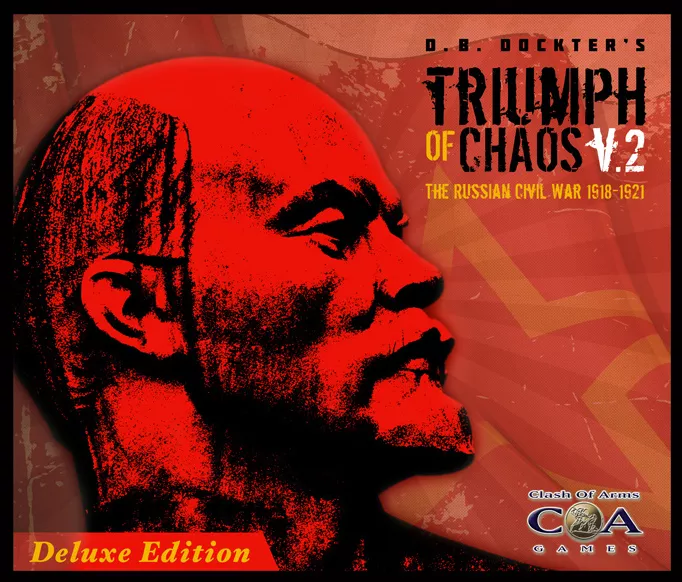
What do you want players of the simulation to be able to manipulate? Or do you want them to be a victim of the strategic situation? A few wargames have an engaging strategic model within which the operational model rests. A number these we like: Triumph of Chaos, CoA, 2005 or Days of Decision, ADG, 1990 (which both built off Persian Gulf, GDW, 1986) utilized cards to push/pull “factions” and “tracks” to one side, which could work. Or, something from Churchill, or Pericles, GMT—where players manage fronts/theaters. We’ve stolen from all. (As Ted Raicer has said, ”Good designers steal. Bad designers invent.”)

Basically, we’ve got a strategic map and an operational map. The operational map “sits within” the strategic map. They are interrelated. We’ve settled on less player control of strategic events and more being on the receiving end of them. There’s some modest ability to nudge in one direction or the other, and there’s a relationship to events occurring on an operational map. And a bunch of interconnected strategic tracks, which in turn unlock or restrict capabilities. All with a small rulebook footprint.
How the Sausage Gets Made…
So, how are we attempting to tackle the challenge of producing a wargame on a current conflict?
First, research, research and more research. One of us stood up a twitter handle & feed seconds after the war began and scraped OSINT data on the web regarding the conflict. And amplified it. Besides the incredible social media campaign being conducted by Ukraine to galvanize support (“strategic messaging”) and attack Russian strategic will, it is clear junkyard analysts are crowdsourcing intel for the resistance. Those junkyard analysts have provided some outstanding insight. A sampling below:
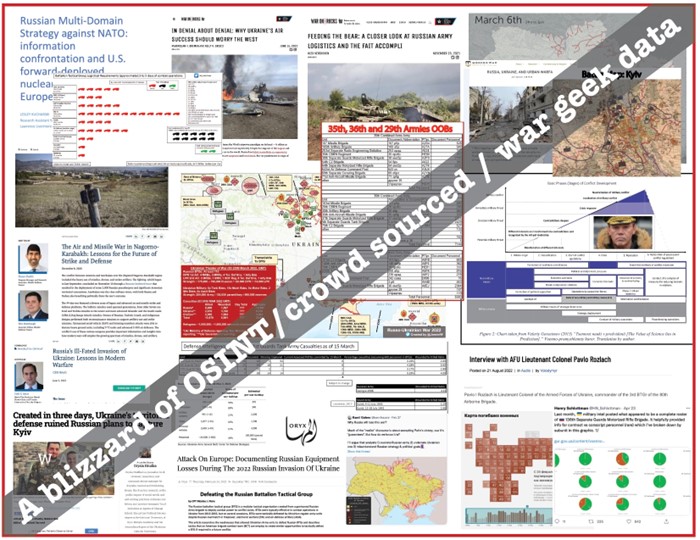
The open-sourced metrics, firsthand accounts and analysis regarding the war spew like a fire hose every day. We supplemented that with on-the-ground reports from our Ukrainian/Russian contacts as it happened. Same was the case regarding the buildup prior to the war, beginning in the fall of 2021. Cataloging, distilling and capitalizing upon insights gleaned from the data is required to produce a strategic operational simulation of what did happen and what could have happened (that which survives the infamous giggle test).
Basic Simulation Model
Using a strategic and operational map model will allow us to embed the various operational offensives within a theater context, as Herman did with Gulf Strike. The idea is to cover each of the offensives not as ‘what if’ excursions, but as the first draft of history within a year of their occurrence. This way we can use the best information available to try and gain an understanding on how and why things resolved themselves.
As of the writing of this article, we think we have a relatively accurate, but not precise, understanding of the failed Russian attack on Kyiv (less so with Chernihiv). We have pretty decent research on the failed campaign to take Odessa and the liberation of Kherson. We are developing an understanding of the battles in the East and #OperationKupcake. So given that, what have we learned since the 1990s?
Flashpoint Golan
Our first conclusion is large conventional operations haven’t changed that much from expectations developed during the end of the twentieth century. The United States has invested huge quantities of treasure and brainpower in developing what the Russians first called the reconnaissance strike complex. The DoD who invented it stole the branding and called it the Revolution in Military Affairs (RMA).
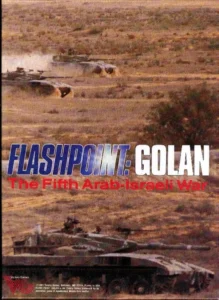
Flashpoint: Golan was designed to simulate the RMA. At its core, if a battalion or larger unit moves it will usually be seen and if seen it will be struck by long range fires. The side with the information advantage prevails. From everything we have seen in the current conflict, this not only holds true but is now augmented by cheap swarms of drones.
This was predicted in work that Herman collaborated on with the late Admiral Cebrowski, who used a Herman article on munitions-based warfare and rebranded it, “network-centric warfare.” Network-centric warfare predicted that information would enable swarming tactics, which the Ukrainians with their small hunter killer teams have proven to be correct.
One of the non-surprises is the enduring effectiveness of long range artillery and missile systems. In the early phases of the war the Russians had a significant advantage in long range systems that will be reflected in this first volume (module) order of battle research. As we do additional operational modules on campaigns in the east and Kherson front, you will see this Russian advantage erode and perhaps be surpassed by the Ukrainians.
Another long range fires lesson is one that was witnessed during the Gulf War. After the initial US strikes on Iraq, the US stocks of precision munitions were being expended at a prodigious rate. After Day 3 of the Shock and Awe air campaign, the US began using ‘dumber’ munitions to preserve the high-end munitions for the ground offensive that was to come. What we’ve seen is the Russians have gone through a similar evolution. At this time (April 2023) they are mostly using ‘dumb’ munitions.
To accommodate all of this, Ukraine 2022!: Module 1: Miracle on the Dnipro will have both armed and unarmed drones added to the Flashpoint detection mechanics while streamlining the procedures. The current simulation already uses the full spectrum of long range fires, but they will be tweaked for hypervelocity and some of the newer classes of missiles.
The biggest change to the system will be in the Theater rules that will attempt to examine the strategic ‘media’ war where journalists in the field reporting on atrocities sway Western allies and their support for Ukraine. We will also take a stab at the strange economics of a war that is partially being funded by energy sales to the West even while they are embargoing the Russian economy. While COVID and this war have driven multiple nails into the Globalization coffin, this is the clearest example that globalization isn’t dead, or won’t die easily. That has obvious implications for other potential global conflict hotspots.
Hopefully, coming soon to a theater near you…

Ukraine 2022! should go on preorder in the summer, and, with any luck, be published late 2023/early 2024. Of course, life could intervene. Or, the war could go in a truly horrific direction and expand well beyond its current area of conflict. Or some other event on the Richard Berg random events table could pop up.
Barring that, we’ll see if our fool’s errand is successful: if a compelling story is told well. And, maybe, a decent strategic operational model is produced for students of this fight of a European republic against a Eurasian fascist aggressor (House Harkonnen). Will Putin be thwarted? Will a European republic prevail? That’s all unknown in April 2023. But it’s fantastic fertile ground upon which to tell a tale.
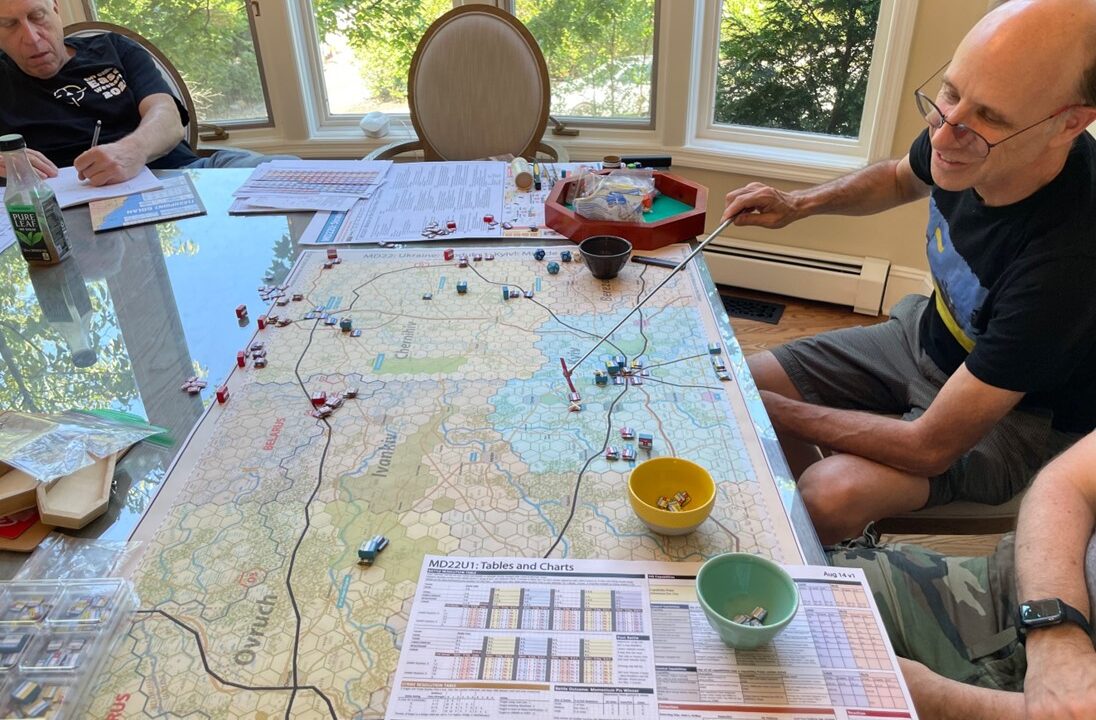
David! Great to see this project! Let me know if you need playtestors.
Слaва Украине!
Love the Dune references – I am hosting a six-player game of Dune next weekend (Galeforce edition).